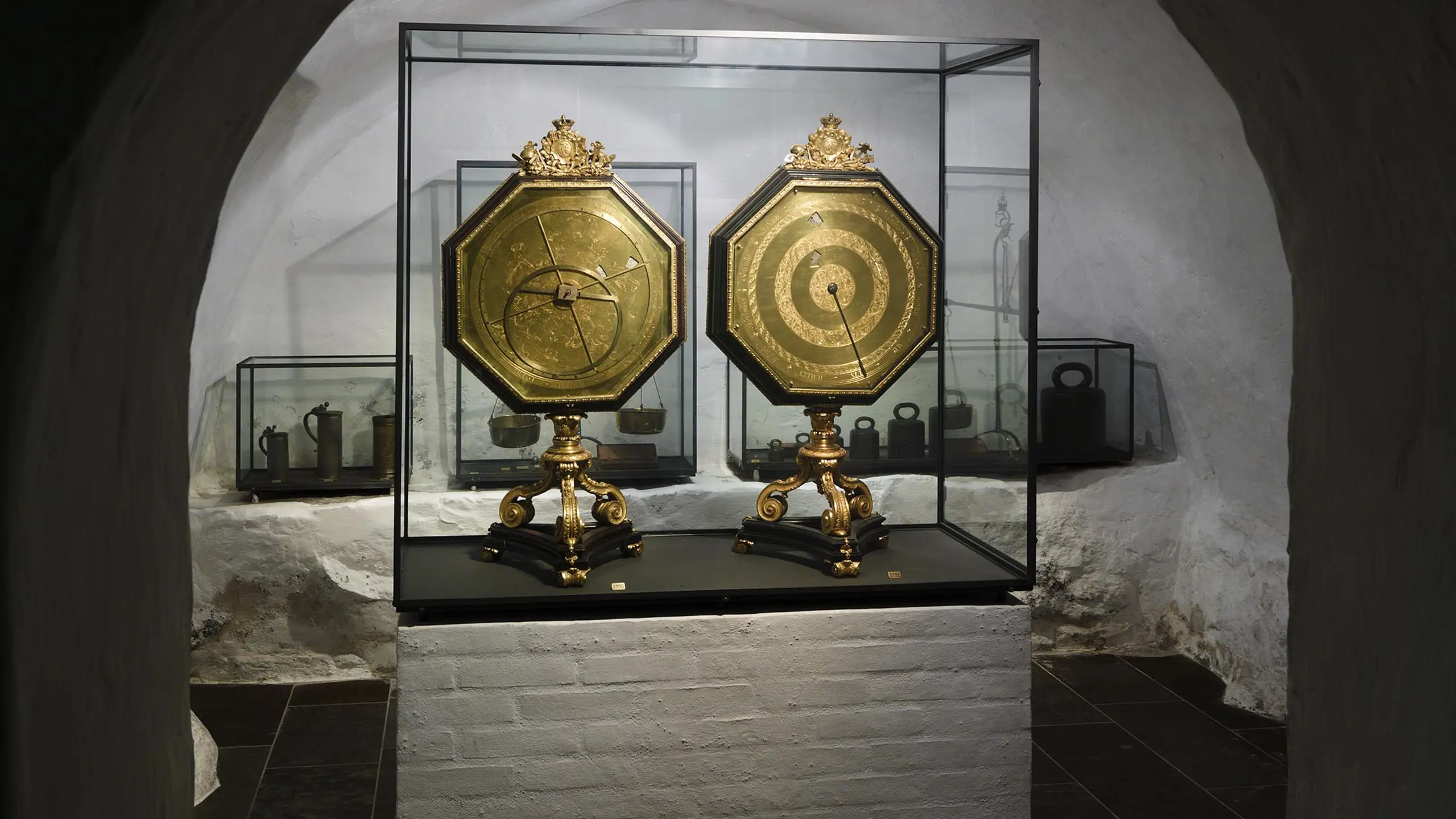Ole Rømer's Room (room F)
The astronomer Ole Rømer (1644–1710) trained at the University of Copenhagen but lived at the Observatory in Paris from 1672 to 1681. From 1681, Ole Rømer became Christian V’s trusted man and was employed at the Danish royal court.

Ole Rømer's work
Ole Rømer rose to international fame when, during his studies of the Jupiter’s moons, he determined the speed light – then described as the ‘hesitation of light’. In 1680, he presented a machine that showed the orbits of the planets (called a planetarium) and a machine for determining lunar eclipses (called an eclipsarium) to the French Academy of Sciences in Paris and to the French King, Louis XIV. Both machines are still in Paris, but here, in Ole Rømer’s Room, you can see an identical set. The set in this room was acquired by Christian V in 1682, and in 1685, he received another two sets as gifts from Siam and the Emperor of China.
After his return to Denmark, in 1681, Ole Rømer became The King’s trusted man in all technical matters. He rationalised several existing systems, including developing a uniform system of weight and measurements.
The original ‘national prototypes’, which were presented to The King in 1683–1684, are on display in this room.
previous room <- | -> next room
Objects in the room
If you are at the museum, you can admire the fascinating objects in the room and read more about them below.
The descriptions are brief and generally do not include images. They are intended as an added resource if you would like more detailed information about an item, such as who made it, its origin and its meaning.